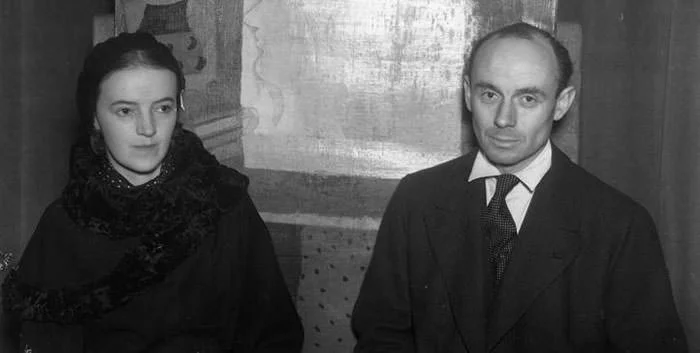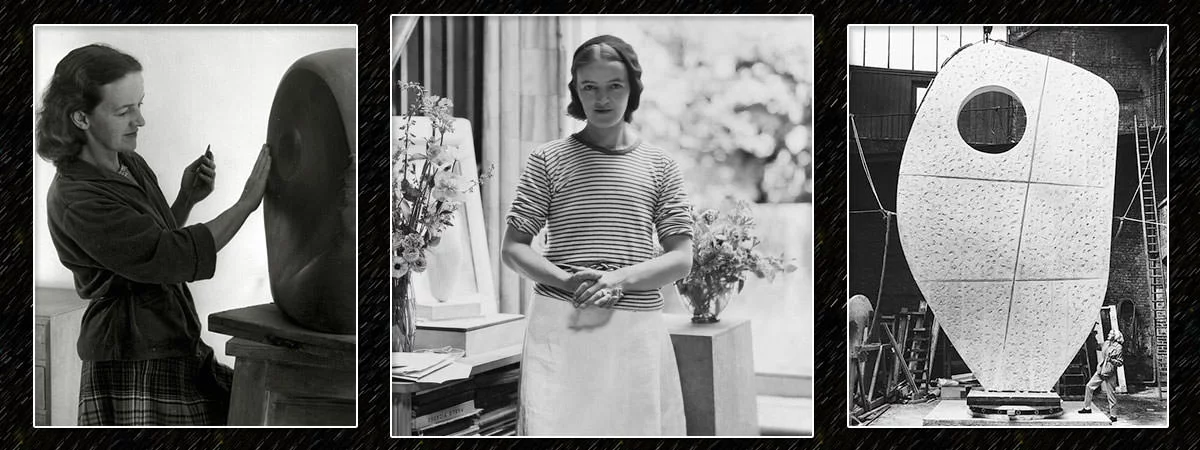Barbara Hepworth was an English artist, who along with her professional rival Henry Moore, was a pioneer in the field of modern sculpture and is considered among the greatest sculptors of the twentieth century. Her most famous masterpieces are her pierced sculptures like Single Form and Pierced Form. Know about the life, works, accomplishments and death of Barbara Hepworth through these 10 interesting facts.
#1 SHE STUDIED AT THE ROYAL COLLEGE OF ART
Born on 10 January 1903 in the city of Wakefield in West Yorkshire, England, Jocelyn Barbara Hepworth was the eldest child of Herbert Hepworth and his wife Gertrude. Her father Herbert was a civil engineer who became County Surveyor in 1921. At the age of 15 Barbara decided to become a sculptor. She did her early education at the Wakefield Girls’ High School before joining the Leeds School of Art in 1919. She then won a scholarship to the prestigious Royal College of Art (RCA), where she studied from 1921 to 1924

#2 SHE HAD A FRIENDLY PROFESSIONAL RIVALRY WITH HENRY MOORE
While studying at the Leeds School of Art, Hepworth befriended Henry Moore, a fellow student who also went on to become a renowned British sculptor. They developed a friendly professional rivalry that would last for many years and the influence they exerted on each others work was not only important in the development of their careers but also instrumental in the rise of Modernism in the British art scene.

#3 SHE MARRIED ENGLISH SCULPTOR JOHN SKEAPING IN 1925
Prix de Rome was a French scholarship for arts students. Hepworth was the runner-up for the Prix-de-Rome in 1924. The scholarship was won by the English sculptor John Skeaping, who was known to Hepworth from her time at the RCA. Hepworth was awarded a West Riding Scholarship for one year’s travel abroad. She travelled with Skeaping through Siena and Rome. On 13 May 1925, Barbara Hepworth married John Skeaping at the Palazzo Vecchio in Florence, Italy. They moved to London in 1926 and exhibited their work together from their flat. In 1929 they had their only child Paul. They got divorced in 1933.

#4 HER SECOND HUSBAND WAS ENGLISH ABSTRACT PAINTER BEN NICHOLSON
Barbara Hepworth met English abstract painter Ben Nicholson in London. At the time Ben was married to painter Winifred Nicholson. Barbara and Ben became romantically involved and in 1934 the couple had triplets, two daughters, Sarah and Rachel, and a son, Simon. Ben divorced Winifred in 1938 and on 17 November of the same year, he married Hepworth at Hampstead Register Office in north London. They got divorced in 1951. Hepworth didn’t marry again.

#5 SHE WON THE GRAND PRIX OF THE 1959 SAO PAOLO BIENNALE
In 1925, Barbara learned to carve marble from the master sculptor, Giovanni Ardini. By the early 1930s she had completely moved to abstraction in her sculptures and she soon introduced piercing to abstract sculpture. Her first major solo exhibition was held in 1943. In the early 1950s she moved away from working only in stone or wood and began casting her works in bronze. This enabled her to carry out large scale sculptures. In 1959, Hepworth won the Grand Prix of the Sao Paolo Biennale. This greatly enhanced her international reputation and by 1960s she was acclaimed as one of the leading abstract sculptors in the world.

#6 BARBARA HEPWORTH IS FAMOUS FOR HER PIERCED SCULPTURES
In 1931, two years after the birth of her first child, Hepworth started to pierce her carvings thus introducing the ‘hole’ to British sculpture. Her first such work is the celebrated sculpture Pierced Form, which was created the next year. The use of piercings to find a balance between form and space became a hallmark of Hepworth’s work and is considered one of her most important contributions to the art of abstract sculpture.

#7 HEr MOST FAMOUS WORK IS THE BRONZE SCULPTURE SINGLE FORM
In 1961, Barbara Hepworth was commissioned to create a sculpture in memory of her friend, the 2nd Secretary-General of UN, Dag Hammarskjöld. Dag was killed in 1961 en route to cease-fire negotiations and was awarded the Nobel Peace Prize posthumously. Hepworth responded with her largest work ever, a bronze sculpture known as Single Form. Displayed outside the UN headquarters in New York since 1964, it is 21 feet high and weighs over 5 tonnes. Single Form is one of the most televised sculptures in the world and perhaps Hepworth’s most famous work

#8 BARBARA HEPWORTH WAS MADE A DBE IN 1965
Apart from being a sculptor, Hepworth was also a skilled draftsman and produced numerous drawings most notably hospital images which she drew during the period 1947–49. In the latter stage of her career she also experimented with lithography. Her famous works in the medium include The Aegean Suite which was inspired by her trip to Greece. She was made a CBE (Commander of the Order of the British Empire) in 1958 and a DBE (Dame Commander of the Order of the British Empire) in 1965. In 1970 her book A Pictorial Autobiography was published.

#9 BARBARA HEPWORTH DIED DUE TO A FIRE AT HER TREWYN STUDIO
In 1949, Hepworth bought the Trewyn Studio in the town of St Ives in in Cornwall, England. It was here that she lived and worked from December 1950 till her death on 20 May 1975. Her death resulted from an accidental fire at her Trewyn Studio. She was 72 years old. Her studio at St Ives is now the Barbara Hepworth Museum and is managed by the Tate gallery. Her son with John Skeaping, Paul, was killed in February 1953 in a plane crash while serving with the Royal Air Force in Thailand. Two of her three children with Ben Nicholson, Rachel and Simon went on to become artists.

#10 SHE IS CONSIDERED ONE OF THE GREATEST 20TH CENTURY SCULPTORS
From 1925 to her death in 1975, Hepworth made more than 600 works of sculpture. Along with her friend and professional rival Henry Moore, she is credited with leading the path to Modernism in sculpture through her pioneering work in the field. In a field that was dominated by males at the time, Hepworth was among the few female artists who were able to carve an international reputation for themselves. She is considered among the greatest sculptors of the twentieth century, whether male or female.

